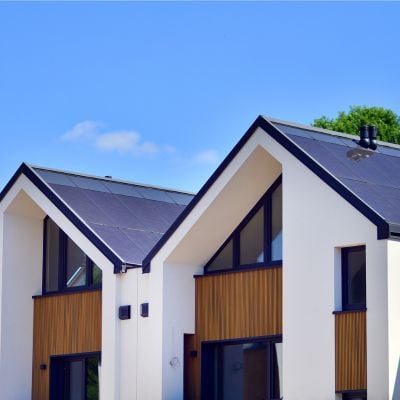Why U.S. cities can’t build 3-flats
Triplexes are commonly found in densely populated cities. But building more of them may not be in the cards anytime soon. And that's a shame.
As Hicks explains in a video posted to his channel, "In many cases, these structures offer on-ramps for homeownership and building equity and wealth. They can encourage and develop strong neighborhoods, and maybe even familial bonds if generations remain living together."
"Buying a two-flat didn’t just mean more breathing room and more pleasant living conditions. They were always intended as wealth-building investments. Rental income could cover the mortgage and provide a degree of economic security," says the Chicago Architecture Center.
Yet dated zoning codes commonly get in the way of increasing the number of these homes in cities by disallowing anything more than single-family homes on a single lot in a residential area.
There's also what Hicks calls the "economics of construction" that's become a barrier.
The National Association of Home Builders recently said that broad inflation in the global economy since 2022 — particularly in building material prices — has driven up the cost to construct a home. Other factors increasing building material prices are disruptions in supply chains and growing demand for sustainable and green options. Construction costs accounted for 64.4% of the average price of a new home in 2024 compared to 60.8% in 2022, according to NAHB’s most recent Cost of Construction Survey.
Hicks says that a three-unit home could easily cost over $1 million to build in big cities. And in today's mortgage rate environment, those who buy those homes as investments will need to charge top market rates to cover their costs. That's not going to address the issue of affordable housing, though.
Invest in real estate without the headache of being a landlord
Imagine owning a portfolio of thousands of well-managed single family rentals or a collection of cutting-edge industrial warehouses. You can now gain access to a $1B portfolio of income-producing real estate assets designed to deliver long-term growth from the comforts of your couch.
The best part? You don’t have to be a millionaire and can start investing in minutes.
Learn MoreHow triplexes could help address the U.S. housing crisis
In a recent Pew Research Center survey, 69% of Americans said they were "very concerned" about the cost of housing. And a 2024 Center American Progress survey found that 76% of people feel similarly. That data also found that 72% of urban residents feel housing affordability is getting worse.
In a 2024 report, the Brookings Institution estimated that the U.S. housing market was short 4.9 million housing units in 2023 relative to the mid-2000s. And as of 2023, roughly half of renter households were housing cost-burdened, per the 2023 American Community Survey — meaning, they were spending more than 30% of their income on housing. That amounts to nearly 21 million households in total.
Triple-unit houses can help solve the problem by allowing for more individual units within the same lot — provided they can be built more affordably.
To that end, though, the Pathways to Removing Obstacles to Housing program could help. It's a program administered by the U.S. Department of Housing and Urban Development that provides funding and incentives to state and local governments for facilitating affordable housing.
Specifically, the program targets communities that are actively taking steps to remove affordable housing barriers such as outdated zoning laws and inefficient procedures.
Not only can triplexes help address the U.S. housing crisis, but they could also promote multigenerational living, which is a beneficial thing itself.
Among adults in multigenerational households, 40% point to financial relief as a perk, according to Pew Research Center. And for 33%, this arrangement helps address the need for caregiving.
Critics of triplexes might argue that they're not only eyesores, but that they exacerbate density issues in already packed cities and have the potential to de-value nearby properties. In the wrong context, these buildings could cause more harm than good. They can be easily converted into luxurious single-family homes or they may be bought for cheap and demolished since land values are high.
"In these cases then instead of just gently encouraging more density like we want, it just serves to increase land values until longtime residents are forced out and it ends up solving nothing in the end," says Hicks.
But all told, there's much to be gained by removing barriers to triplex construction. As Hicks says, “Folks are coming to recognize just how important these buildings are to their cities and the people who live in them.”
The richest 1% use an advisor. Do you?
Wealthy people know that having money is not the same as being good with money. Advisor.com can help you shape your financial future and connect with expert guidance . A trusted advisor helps you make smart choices about investments, retirement savings, and tax planning.
Try it now








